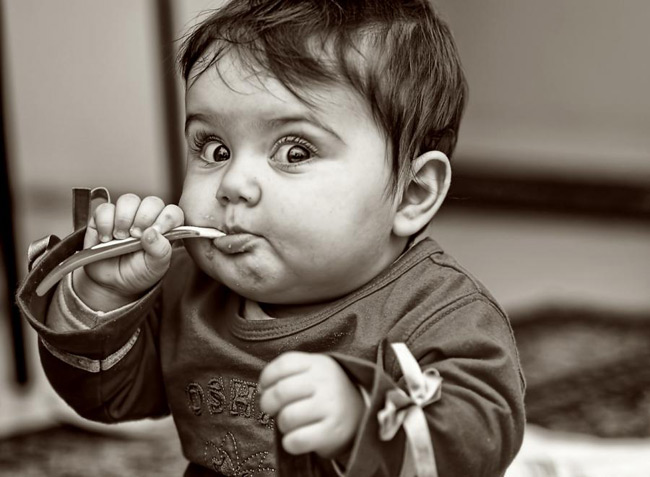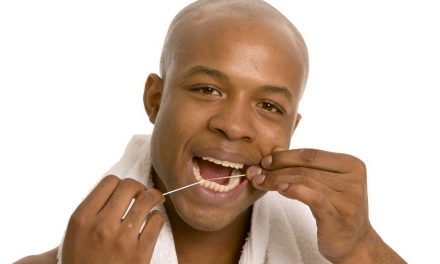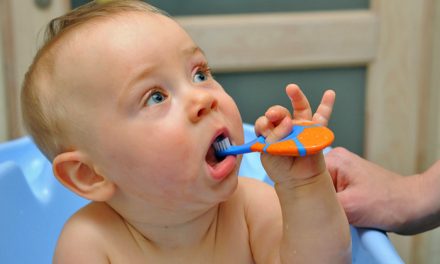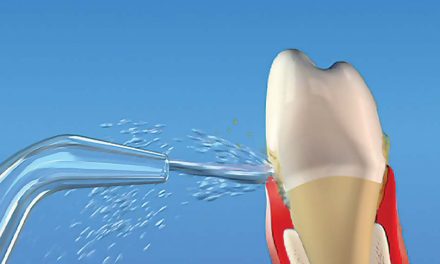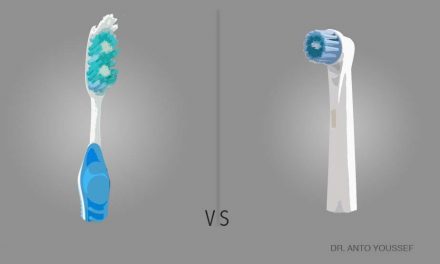A tooth should be cleaned as soon as it erupts in the mouth. Good oral hygiene methods are important for a child to master as quickly as possible. Tooth decay and gum disease are very common among children and they are problems that parents should consider very seriously. By starting early, a baby gets used to taking care of his/her teeth and will keep that habit throughout a lifetime.
Tooth brushing
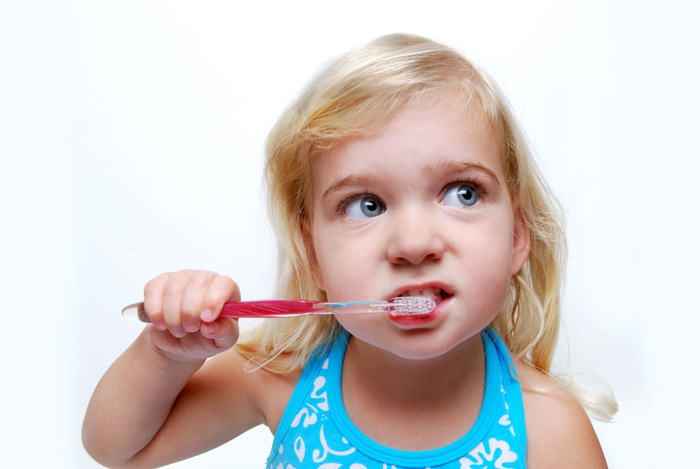
Brushing your child’s teeth can sound like an impossible task. But put in mind that a baby has a tendency to put a lot of things in his/her mouth. Therefore a baby might easily place a toy toothbrush on his/her teeth.
Here are some recommendations on brushing a child’s teeth:
- choose a small, soft toothbrush; dipping it in warm water will soften the bristles even more;
- It is recommended to brush the child’s teeth at least twice a day, in the morning after breakfast and in the evening before bedtime; the brushing should last two minutes, and more emphasis should be put on the molars in the back since they are the teeth most susceptible to cavities;
- change a toothbrush every three months or sooner if there are signs of wear;
- a toothbrush should not be shared between kids;
- floss the child’s teeth, as soon as there are two adjacent teeth in the mouth;
- ask the dentist about putting sealants on the primary molars to protect their chewing surfaces from cavities; sealants are mostly recommended for adult molars and premolars, but can also offer a protection for baby teeth that have deep grooves in them.
When should a child brush alone
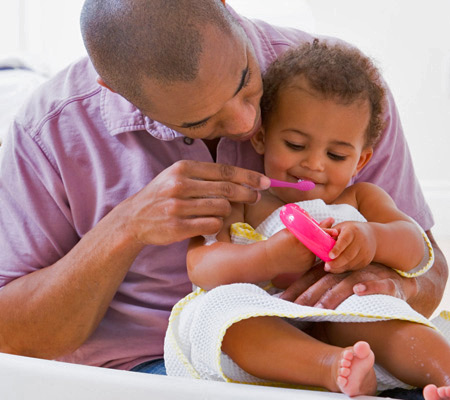 Most children lack the ability of brushing their own teeth before they are about 6 years old. Until then, the best way to teach brushing and flossing is by being an example and showing them. This will allow a child to observe the parent and learn proper oral hygiene methods.
Most children lack the ability of brushing their own teeth before they are about 6 years old. Until then, the best way to teach brushing and flossing is by being an example and showing them. This will allow a child to observe the parent and learn proper oral hygiene methods.
Showing by example how to brush and floss also allows the parents to maintain proper oral hygiene. By reducing the amount of bacteria present in the parents’ mouth, the transfer of harmful bacteria between the parents and the child is also reduced.
Fluoride for kids
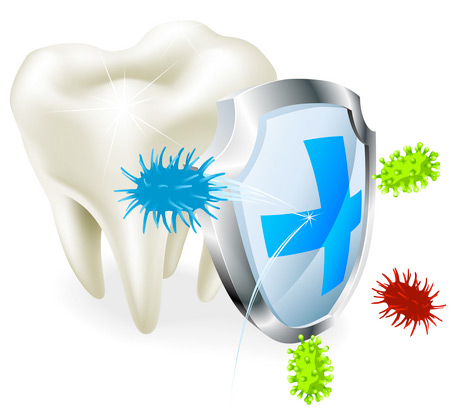 Most dentists and dental associations have confirmed that fluoride is efficient and safe. In reality, it is a mineral element that reinforces teeth and protects them against cavities.
Most dentists and dental associations have confirmed that fluoride is efficient and safe. In reality, it is a mineral element that reinforces teeth and protects them against cavities.
It is recommended to find out if the tap water from the city already has fluoride. If it does not, fluoride supplements purchased from a pharmacy can be given to children.
However, excessive consumption of fluoride can cause dental fluorosis, which are harmless lesions on adult teeth that look like anaesthetic dark stains.
Toothpaste for children
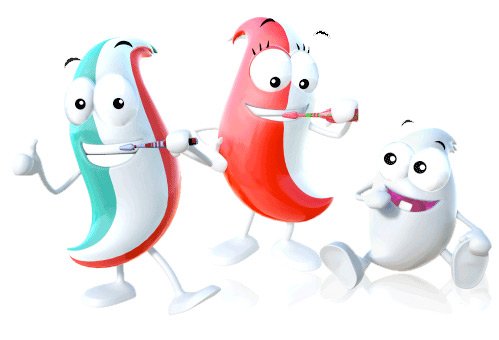 Most toothpaste has flavours that children enjoy, and that will encourage them to brush their teeth. It is important to read the manufacturer’s label because some toothpaste is not recommended for children under a certain age.
Most toothpaste has flavours that children enjoy, and that will encourage them to brush their teeth. It is important to read the manufacturer’s label because some toothpaste is not recommended for children under a certain age.
Although fluoride is important to protect children’s teeth, it is not recommended to use toothpaste that contains fluoride when a child is younger than the age of two. A young child can swallow the toothpaste, and ingesting fluoride in large quantities can cause dental fluorosis on the adult teeth. As previously mentioned, dental fluorosis does not harm teeth, but it makes them look stained. Nevertheless as said, fluoride is important because it gives teeth an extra protection against cavities. Fluoride toothpaste should be used after a child is two years old, and not more than a pea-sized amount.
Mouthwash
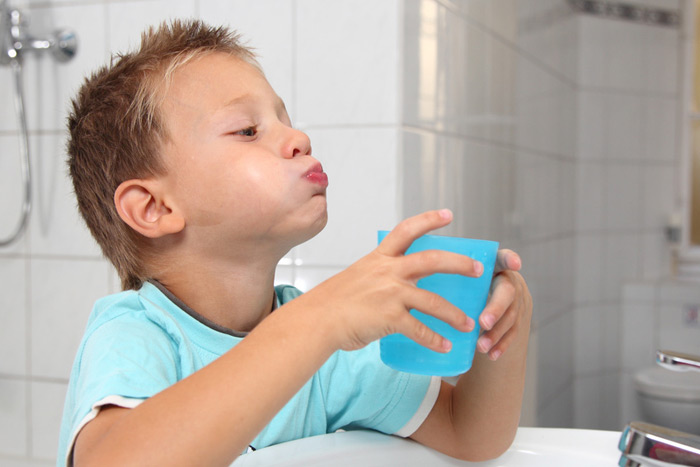
There are numerous children oral rinses that are available in the market. Most are good for their oral health as they may contain fluoride or xylitol, which both protect teeth.
In general, young children that have not yet developed the ability to rinse and spit should not use mouthwash. They usually perfect this around the age of six. After that age, parents should supervise their children when they use a mouthwash and make sure they don’t swallow it.
It is important to remember that oral rinses should complete brushing and flossing, but no replace them, as oral rinses do not clean teeth.
References
- Aquafresh image (Making brushing fun for your child).
- American Academy of Pediatrics (Children’s Oral Health, Fluorosis).
- Dentistry for Children (When should my child start using mouthwash?).
- Must Love Kids Pediatric Dentistry (Should Parents Let Their Kids Use Mouthwash?).
- Consumer Guide to Dentistry (Oral Rinses for Children).
The information above should be used as a reference only. Any medical decision should not be taken before consulting a health care professional.
The masculine gender may have been more used in the article, but without prejudice, to make reading easier.
Category: Children
- 5 reasons why baby teeth are so important
- 5 ways to provide the best dental care for your children
- Brushing children’s teeth
- Dental care for babies
- Early childhood tooth decay (baby bottle tooth decay)
- Easter tips for healthy teeth
- Grey teeth and tooth discolouration
- Hygiene and orthodontics
- Kids’ fear of dentists
- Nutrition for kids
- Thumb sucking
- Tooth eruption
- Your child’s first dental visit
Category: hygiene
- 5 ways to provide the best dental care for your children
- 6 reasons why flossing daily is so important
- Brushing children’s teeth
- Dental care for babies
- Dental cleaning
- Easter tips for healthy teeth
- Electric or regular, which toothbrush is better?
- How to have a beautiful smile?
- Hygiene and orthodontics
- Mouthwash
- Oral hygiene kit for travellers
- Oral irrigator (Waterpik)
- Tongue cleaning
- Tooth brushing

